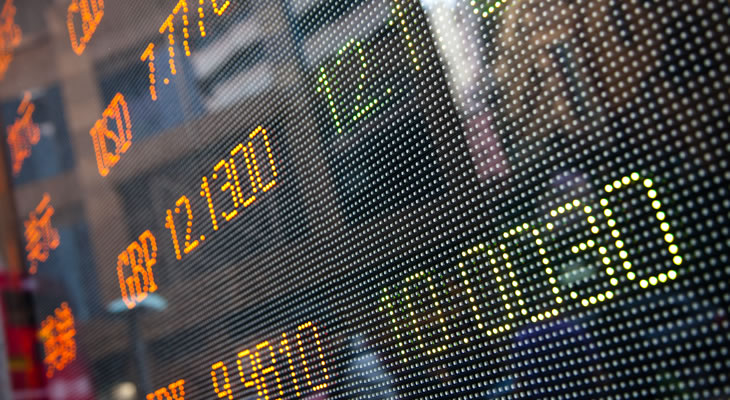Investors are waiting a little longer for an opportunity to buy into the GBP USD exchange rate from its lows, as this week’s UK data was generally disappointing and has left the Pound weak.
The Pound to US Dollar rate hit its worst levels in around three weeks on Thursday morning, 1.2956.
Pound (GBP) Fluctuates as UK Data Fails to Impress
All of the week’s most notable UK ecostats were published this morning, and none of them were particularly impressive.
The Pound has seen weak trade since August’s Bank of England (BoE) policy decision, and this week’s data has not given investors any fresh reasons to buy the undervalued currency.
Britain’s manufacturing production report from June met expectations, coming in at 0% month-on-month and 0.6% year-on-year.
Industrial production actually beat expectations in both prints, but this was not enough to boost Sterling.
The most notable dataset of the day was Britain’s June trade deficit update, which was forecast to lighten from -£-3.07b to around £-2.5b. However, the results actually worsened from a revised £-2.52b to £-4.56b.
This marked the widest UK trade deficit print in nine months and was largely driven by the biggest slump in exports since the month of the Brexit referendum.
According to Suren Thiru, head of economics at the British Chambers of Commerce (BCC);
‘The sharp deterioration in the UK’s net trade position in June was disappointing, and means the trade deficit in the second quarter of this year came in slightly higher than in the previous quarter. Taken together with the recent jump in the current account deficit, signals the continued weakness of the UK’s external position.’
As markets still lack any reason to buy the Pound, they’ll be looking ahead to next week’s key data before making their next moves on the currency.
Next week will see the publication of July’s UK Consumer Price Index (CPI) report, which has strong potential to influence the long-term Pound outlook.
For example, if UK inflation comes in well above expectations, it could boost speculation that the Bank of England (BoE) could be pressured into tightening UK monetary policy in the foreseeable future. This would lead to a boost Sterling demand.
Other key UK data due for publication next week includes June’s UK wage growth results, another figure that BoE policymakers have been watching closely in recent months.
US Dollar (USD) Benefits from ‘Safe-Haven’ Demand
As geopolitical tensions between the US and North Korea have flared up again this week, the US Dollar’s role as a ‘safe haven’ asset for investors has come into play.
This has led to US Dollar strength, despite recent economic and political uncertainties in the US and low Federal Reserve interest rate hike bets.
Wednesday’s US data may have supported the US Dollar slightly. June’s wholesale inventories results beat expectations of 0.6% month-on-month, coming in at 0.7%.
The US Nonfarm productivity projection for Q2 also beat forecasts with a result of 0.9%.
However, investors are waiting for Friday’s highly anticipated July US Consumer Price Index (CPI) results before making any big moves on the ‘Greenback’.
June’s US inflation report fell short of forecasts, worsening concerns that the US economy would not be able to support higher US interest rates any time soon.
If US inflation beats expectations on Friday, bets that the Federal Reserve will hike US interest rates a third time before the end of 2017 will jump and the US Dollar will see some stronger demand as the economic outlook improves.
Poor inflation would lead to prolonged USD weakness though and would help GBP USD to recover.
GBP USD Interbank Rate
At the time of writing this article, the GBP USD exchange rate trended in the region of 1.2995. The US Dollar to Pound exchange rate traded at around 0.7695.


Comments are closed.